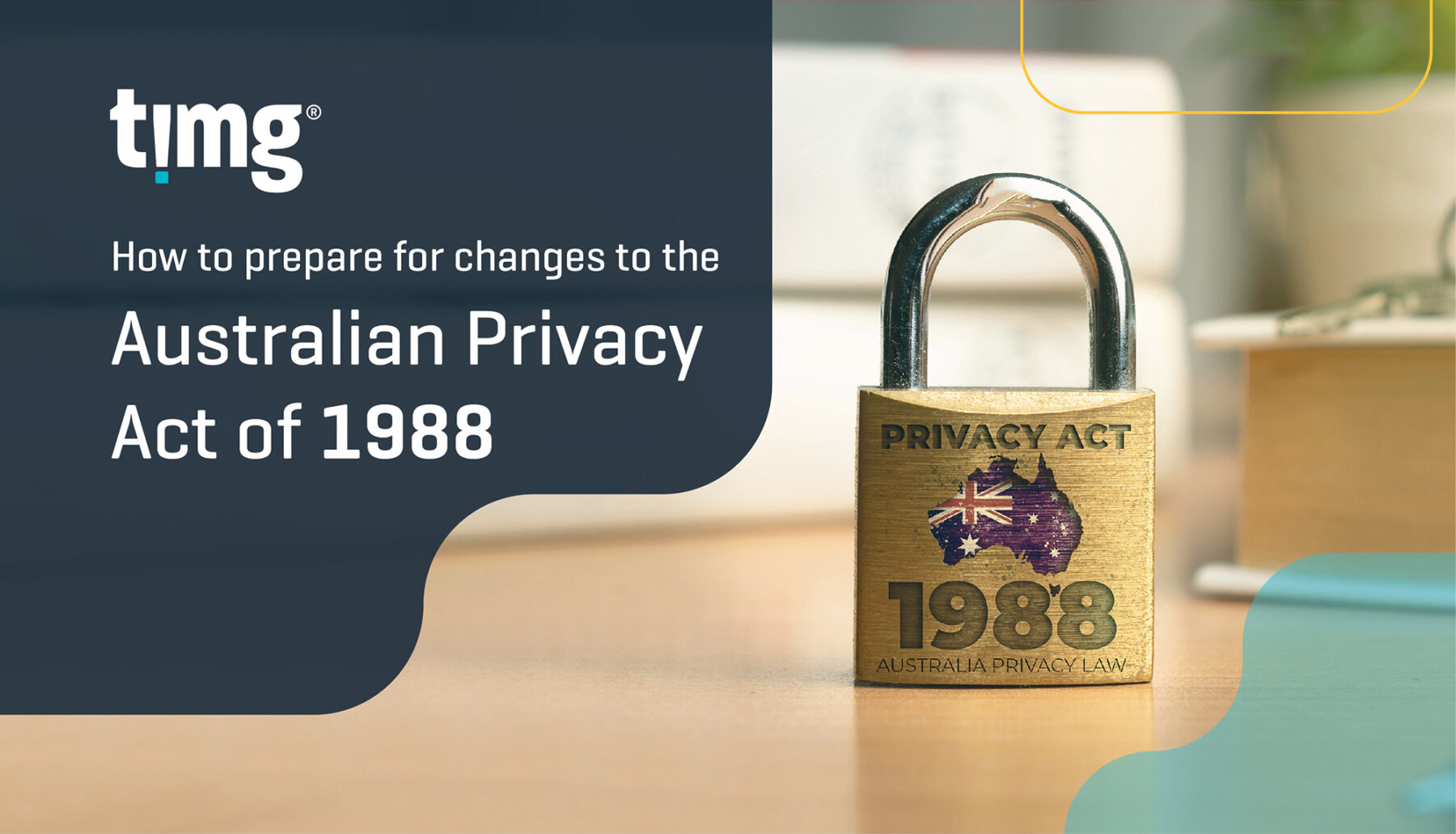How to prepare for changes to the Australian Privacy Act of 1988
The proposed amendments to the Privacy Act 1988 will require Australian businesses and organisations to be well in control of their data. Getting an early start on determining what the proposed changes mean for your business and the resulting impact of these changes, will stand you in good stead.

The proposed amendments to the Privacy Act 1988 will require Australian businesses and organisations to be well in control of their data. Getting an early start on determining what the proposed changes mean for your business and the resulting impact of these changes, will stand you in good stead. The below points will hopefully shed some light on what you need to consider as you prepare your information management plan in line with the proposed new legislation.
The Privacy Act in any jurisdiction is vital legislation designed to govern how personal and business data is collected, stored, and used and in today’s complex digital landscape, the secure management of client and customer data has never been more critical. In Australia, the recent data incidents that exposed hundreds of thousands of people’s personal details has prompted the government to propose a series of significant changes to the Privacy Act. These changes will have severe implications and penalties for all businesses operating across the country. As a business owner, it is essential that you prepare for these changes to ensure that your organisation remains compliant with the law.
Five important steps to prepare for changes to the Privacy Act of 1988
There are several steps that can be taken to ensure that your physical document archive and data storage (including Backup tape storage and Cloud backup storage) to prepare for the upcoming changes:
1 – Understand the proposed changes
The first step in preparing for the changes to the Privacy Act is to understand what the proposed changes are and how they may impact your business. You can read up on the proposed changes on the Office of the Australian Information Commissioner (OAIC) website or seek legal advice to understand how the changes will affect your business.
2 – Review your data handling practices
Once you understand the proposed changes, review your data handling practices to ensure that they comply with the new requirements. This includes reviewing your privacy policy, consent forms, and data breach response plan to ensure they meet the new standards.
3 – Conduct a privacy impact assessment
A privacy impact assessment is an essential tool to help you identify and mitigate potential privacy risks in your business. Conducting a privacy impact assessment can help you identify areas where you may need to make changes to comply with the proposed changes to the Privacy Act.
4 – Train your employees
Ensure your employees are trained in the new requirements and your updated policies and procedures. This will help them understand their obligations and help protect your business from potential privacy breaches.
5 – Seek professional advice
If you’re uncertain about how the changes will affect your business, seek legal advice from a qualified privacy lawyer who can provide guidance on how to stay compliant with the new regulations.
 Your browser is very old. It's so old that this site will not
work properly as it should.
Your browser is very old. It's so old that this site will not
work properly as it should.